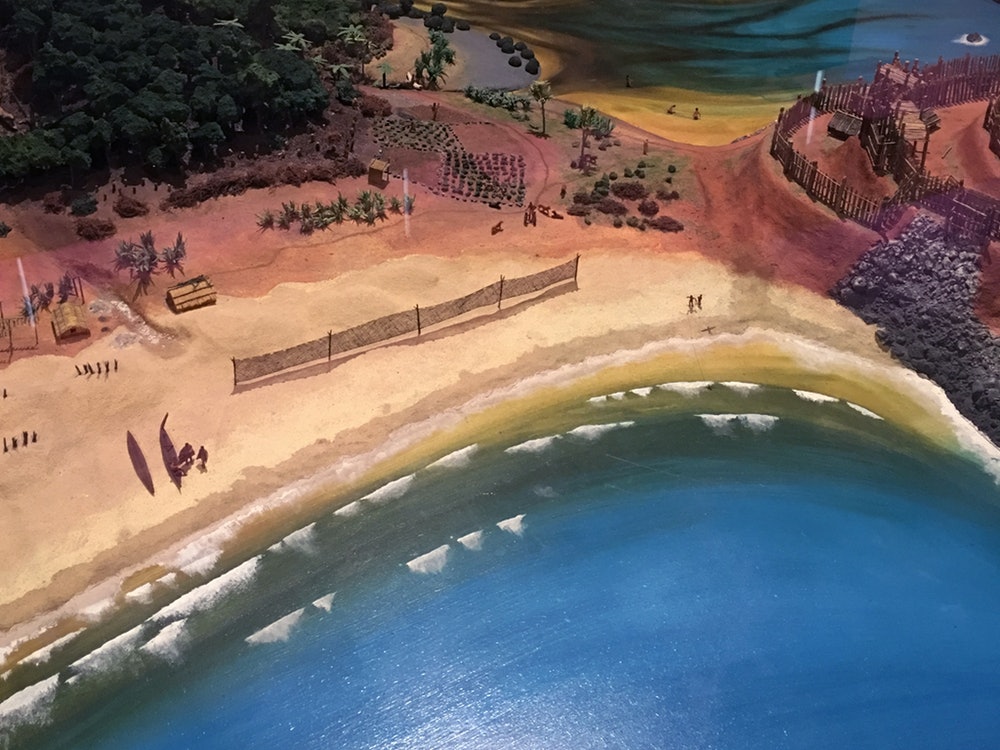7. Pā - Settlement
View Map map
What you’re looking at is not a real settlement but one based on historic landscapes and sites. First let’s look at the pā site – the village on the hill. These sites were close to good fertile soil and the sea for growing and gathering food.
All the activity you’d expect to see in a Māori settlement is going on here, from gardening to gathering shellfish to carving out a waka or canoe and making tools. Not all these activities would take place near the pā. Suitable trees for building waka or stone deposits for tool making could sometimes be a good distance away.
Māori carefully cultivate their māra or gardens, and plant and harvest according to a lunar calendar called maramataka. Some tribes base the month on the full moon and others base the month on the new moon.
Kūmara or sweet potato was a staple crop and you can see the very tidy plots of this vegetable. Kūmara were planted in mounds of soil. In spring, groups of gardeners would work the ground in formation with a digging stick called a kō. Around March and April, harvesting would begin.
Taro is the other crop you can see on the swampy ground on the other side of the estuary. It also grew well in rich soil by riverbanks.
Before moving on take a look at the top corner of the forest. Try to find the man hidden under the trees. You’ll have to go to the next stop to find out what he’s doing.
Head to stop 8 – the case by the long upright spears.
